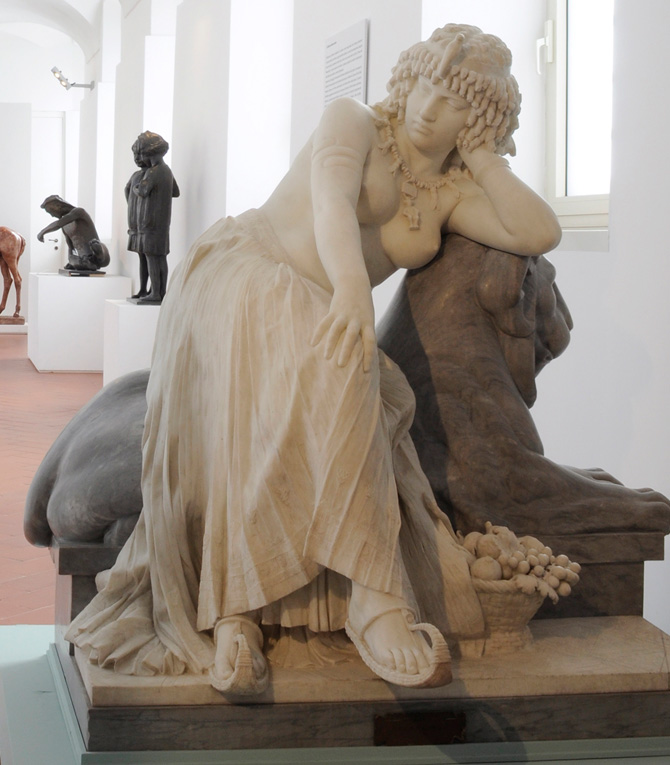Scythian sewn-on plaque of possible deity from the Chertomlyk Tumulus Kurgan 4th C. BCE
"The Chertomlyk Barrow, whose mound measures some 20 metres high and 50 metres in diameter, had been looted, but even what remained was truly magnificent. Buried here was a king, his queen, his two armour-bearers, several grooms, and eleven horses. The royal burial has yielded weapons and gold plaques with a variety of designs, but our main interest is in the casing of the king's gorytus - a massive gold plate depicting episodes from the Greek myth of Achilles - and in the gold cover of his scabbard with the scene of a battle between Greek and Persian warriors. The queen's burial contained a large number of gold ornaments: plaques forming part of a headdress, pendants, a torque with the terminals shaped as lion figures, bracelets, finger-rings, and a string of beads.
Another amazing work of art is a silver amphora embossed with a design of flowers, leaves, palmettes, figures of birds, and gryphons tearing stags, and with a magnificent frieze of men and horses in relief. A large shallow silver bowl and ladle were found next to the amphora. The tomb of one of the royal armour-bearers also yielded valuable articles. The caches were found to contain fragments of decayed woollen textiles, numerous gold costume plaques, and more gold plaques from women's headdresses. Equally rich are the horse trappings, which include some 250 gold, silver and bronze bridle sets with bits, cheekpieces and ornamental plaques, as well as gold plates from saddle mountings, and finials from chariot poles. An important part of the Scythian section is comprised of beautiful specimens executed in the animal style. Viewed as a whole, they illustrate the development of this style all the way from the earlier realistic efforts to later works rendered in a simplified, stylized manner. The earliest specimens include two gold shield ornaments: the stag from the Kostromskaya Barrow, and the panther, from the Kelermes Barrow; characteristic of later periods are the plaques and cheekpieces decorated with distorted, strongly ornamentalized animal figures, which come from the Elizavetinskaya Barrows."
-taken from Megalithic UK
 |
| Scythian sewn-on plaque of possible deity from the Chertomlyk Tumulus Kurgan 4th C. BCE. Unknown person or deity. The Hermitage Museum suggests Dionysos. Diameter: 3.6cm. Hermitage Museum. |
Source:
Quote:


Comments
Post a Comment